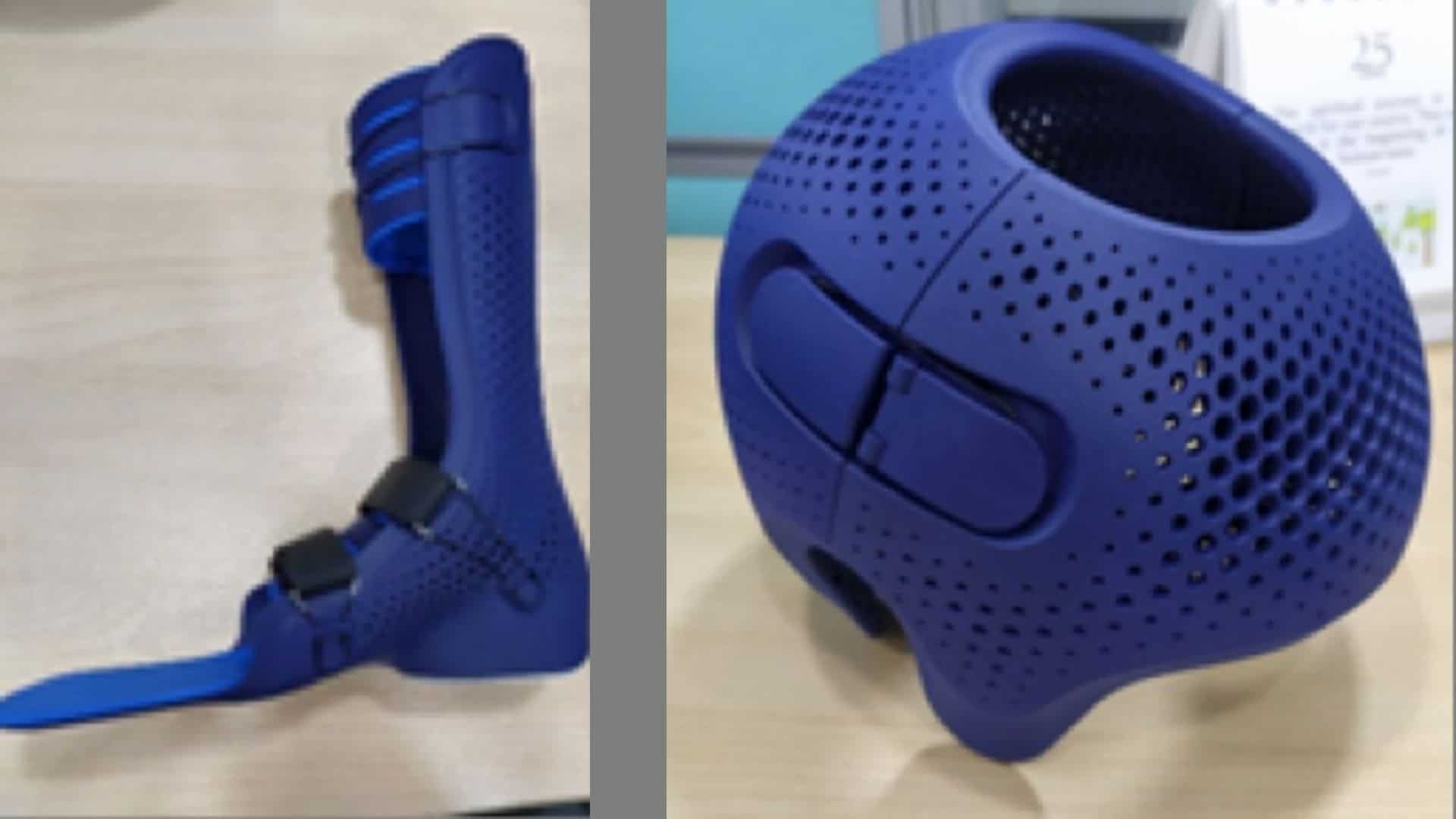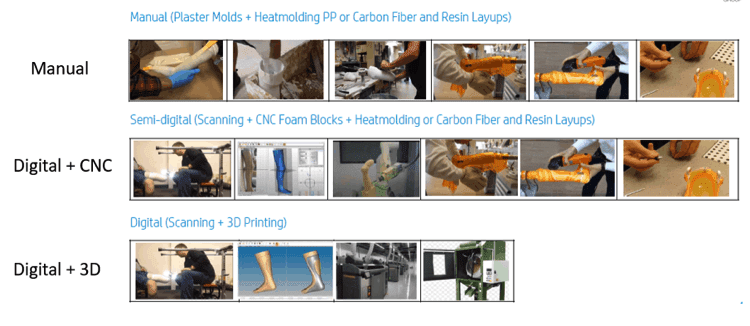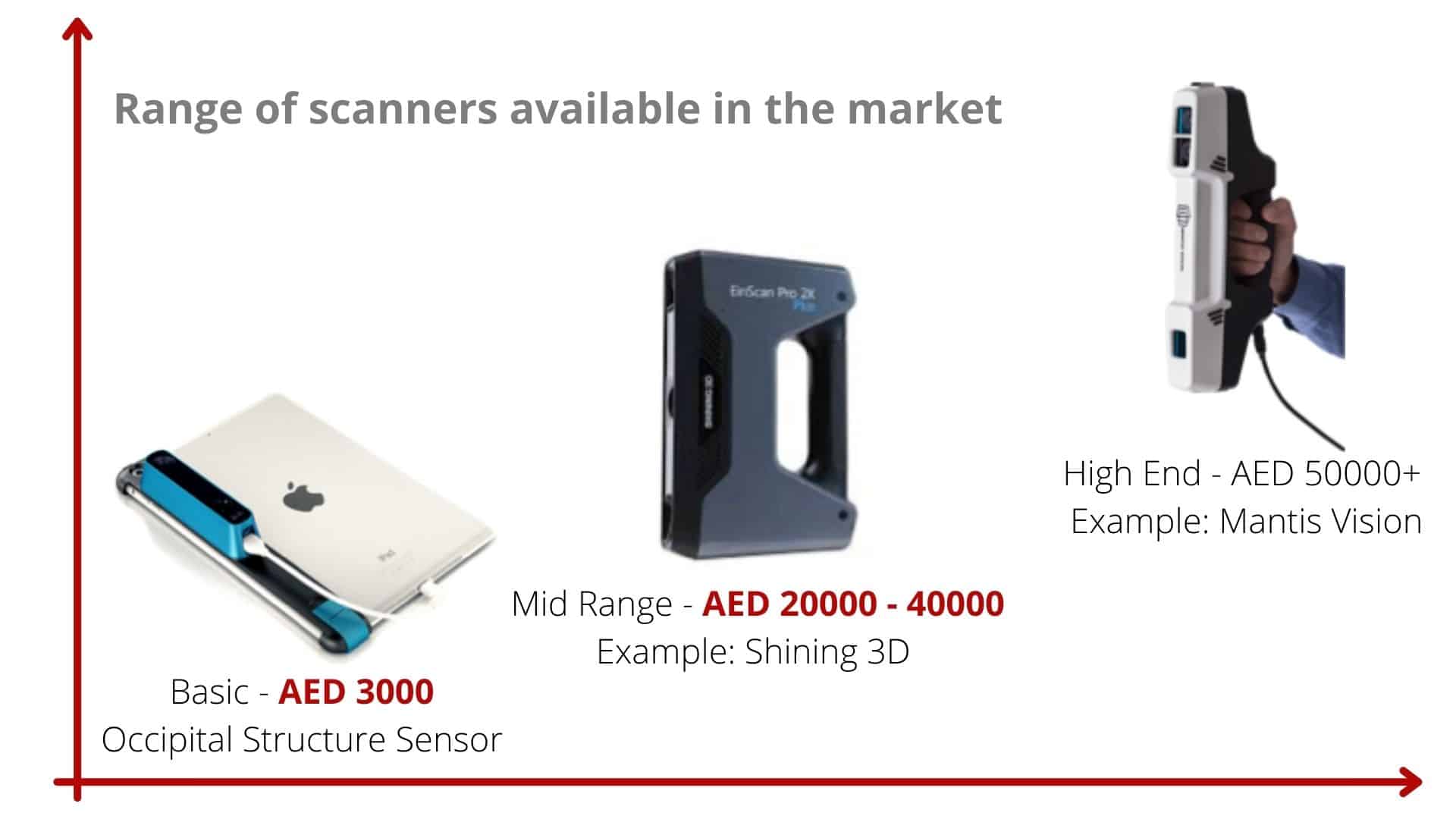Healthcare is one of the main sectors and end use application areas where there is focus in the Middle East for 3D printing. Applications of 3D printing comprise mainly of implants, medical devices, surgical planning models, orthotics and prosthetics devices. The medical 3D printing market is expected to reach an estimated $4.5 billion by 2026 with a CAGR of 36% from 2020 to 2026. In this article we focus on the Orthotics and Prosthetics market of UAE and its growth prospects.
Orthotics and Prosthetics market in UAE is mature with highly qualified professionals working very closely with Orthopedic doctors and hospitals. Orthotics and Prosthetics (O&P) technicians or CPO (Certified Prosthetist and Orthotist) are providing new life to people who suffers from congenital diseases or have lost a limb in accidents or due to diseases like diabetes or sarcoma.
There are around 25 clinics in UAE alone dealing with O&P devices. The major devices manufactured are Insoles, Ankle Foot Orthoses (AFO) Knee and Ankle Foot Orthoses (KAFO), night splints, Cranial Helmets, scoliosis braces and immobilizer devices.
On an average 0.7 % of the population require support devices either permanent or temporary during their life. The total market of O&P devices in UAE is around 130 million AED annually. And with increase in diseases like diabetes the number of patients requiring an artificial limb is increasing. With growing awareness about benefit of using insoles in managing pain and decreasing foot ulcers, the demand for insoles is also increasing. Though a lot of readymade solutions are available for insoles, they cannot match the custom-made insoles efficacy. Since every product must be custom made, 3D printing offers a very good solution for O&P products.

Conventional Process of making O&P devices
All the clinicians in UAE, except a few are using conventional methods to make O&P devices. The patients will visit the clinic based on the orthopedic doctor’s prescription and the technician will access the condition. The technicians to take measurements rely on plaster casting or hand measurements to get the negative of the device required. Then they will pour plaster onto the negative to get the positive mold. After that they will make the necessary adjustments on plaster. In conventional methods the prosthetics is made from polypropylene sheet which is heated and laid on top of the cast through vacuum forming. This process can take around a week and if the fitting is not correct the patient will have to visit the clinic multiple times. Some of the clinics have moved do a semi conventional semi digital process. In this semi digital process, the clinicians make measurements using digital tools like a scanner. The digital model is then used to make the mold using form utilizing a robotic arm a desktop milling machine and makes the device through vacuum forming.
Digital O&P Process
In a complete digital process, the measurement is done using the scanner and a suitable design is made using 3D CAD software or an algorithm. This design is directly sent to the 3D printer and the orthotic device is printed. There are many advantages of converting the conventional to a completely digital process.
- The technician saves a lot of time through 3D printing process which he can now utilize do see the patients
- Saves a lot of space which was used earlier for keeping the plaster molds
- The manufacturing process is repeatable and does not depend upon the skill of technician
- The number of visits of the patients can be reduced
- Complex shapes which were not possible earlier can be manufactured now
- The fitting and comfort level of patients increases 3D printing
- The thickness can be varied according to the requirement and lightweight is possible.

Challenges in adoption
Despite all these clear advantages, the adoption level of 3D printing is not up to expectation. In UAE only a few companies like MOBILIS, Orthomena, Mediclinic adopted 3D printing in their process. There are a few reasons behind this. The key processes like patient interaction, diagnosis and assessment is going to be done by CPO even if the remaining processes are digitized. These in combination with the existing conventional manufacturing has been working very well till now and there is reluctance to change. However, the demand from customers for better products, the ease of using digital softwares will make the CPOs to rethink this current process. The other major challenges of adoption are:
- Lack of scanners which are reliable
- Design skillls
- Identifying tested and reliable 3D printing machines
- Cost of the overall solution
The familiarity of patients with 3D printed devices is increasing and it is a matter of few years when they start asking for 3D printed devices instead of conventional ones as they are more customised for them. The doctors prescribing the treatment also plays a major role in adoption of this technology and bringing it into the mainstream.
Way forward
UAE is witnessing a change in the approach to 3D printing in O&P devices. Below are some of the key market interventions causing this change.

Availability of Scanner solutions.
Selecting and purchasing a suitable scanner is the first step in moving towards digital process in orthotics. There are many scanners available in the market. The price range starts from 3000 AED to 50,000 AED. The functionality and accuracies vary according to the price. For most of the applications in orthotics a structured scanner should be sufficient.
Design solutions.
The major blockage of converting or shifting to digital process is in the design. Earlier orthotist technicians used their own skills in adjusting and fabrication for their patients design so they knew what they were doing and how they were doing. Most of them are not trained in CAD software. This has led to a low adoption rate among CPO’s. Many companies realized this is a problem and have come up with intelligent solutions which will bridge this gap. An interesting factor in these companies is that it is not a software company who is bringing these solutions. But orthotist technicians who understood the gap are building platforms and algorithms. The technician follows a very similar process as in conventional way except that it happens in a digital platform. Some of the solutions in the field are a) Invent medical b) Mercuris c) Rodin-4d d)Vorum, e) Spentys etc. (Details to be provided in the next article)
3D printing.
The last but the most important part in the entire process of digitization is 3D printing of the device. The selection of 3D printing technology depends on the final application. World over HP Multi Jet Fusion technology is used by the majority to manufacture and use orthotics devices. HP technology is reliable and predictable, and the materials are FDA approved for use in contact with skin. One of the big issues is the heavy investment required for setting up the manufacturing facility. The volume of devices done by the clinics does not justify the purchase of dedicated 3D printers. The alternative is to have a central fabrication facility dedicated to orthotics and prosthetics where the technicians can send the final file and get it 3D printed within one or two days. Companies like “Additive America” is following this approach and have been successfully printing orthotic parts for more than one year now.
This is a transition period for Orthotics and Prosthetics in UAE and Middle east in general. Businesses and clinics adapting to this new process will continue to improve the customer experience and market share and as they say the rest will be history. .. (This series will continue with more focus on the software products and comparison of features. )


